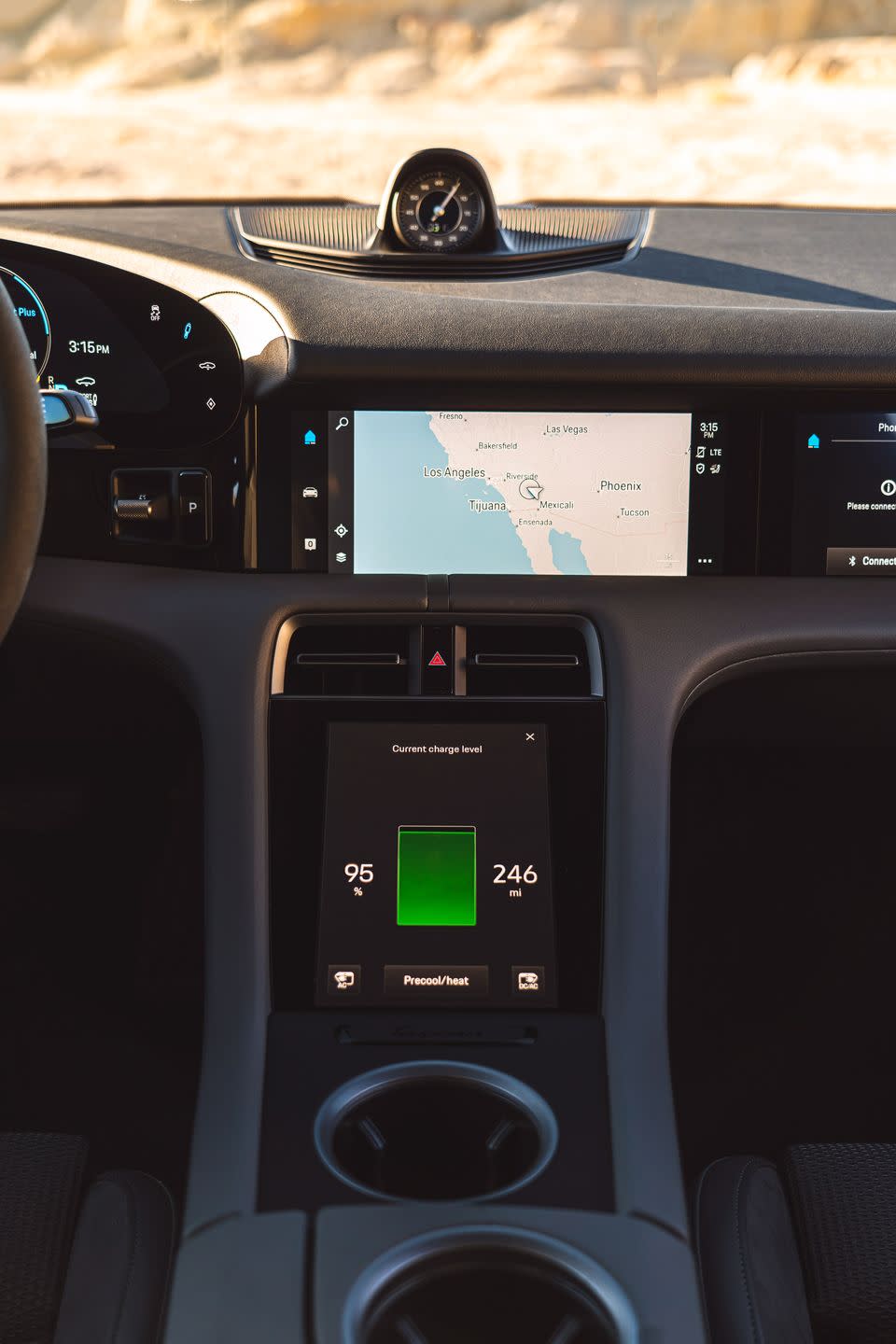EVs Explained: Battery Capacity, Gross Versus Net

An EV's range depends on the size of its battery. There are two metrics for describing battery capacity, and manufacturers aren't always clear about what their stated capacities represent.
Gross Capacity—or Total Capacity—is the total amount of energy a pack can theoretically hold.
Net Capacity—or Usable Capacity—is the amount of energy the car can actually draw on to move.
Simply put, battery capacity is the energy contained in an electric vehicle's battery pack. It's as important as motor power and torque because the car's range depends on the size of its battery, and how efficiently the car uses that energy.
Energy capacity is measured in kilowatt-hours, or the ability of a battery to deliver a set power output (in kilowatts) over a period of time (in hours). Even at highway speeds, most vehicles only need 20 to 30 kilowatts to keep themselves moving at a steady speed. So, depending on the vehicle, a 60-kWh battery might allow up to three hours of travel. Factors such as speed and outside temperature also heavily influence the rate of battery use.
Today's EV batteries span from 28.9 kWh (in the Mini Cooper SE, for a EPA range of 110 miles) to roughly 200 kWh in the coming 2022 GMC Hummer EV pickup, which is expected to have a range of 350 miles.
But not all battery specs are the same, and not all manufacturers explain what their battery capacities represent. There are two different metrics:
Gross or Total Capacity is the total amount of energy the pack can theoretically hold.
Net or Usable Capacity is the amount of energy the car can actually draw on to propel itself.
The difference is necessary because completely depleting a battery down to its very last electron can damage it or shorten its life. Automakers build in margins to prevent batteries from discharging completely and from charging right up to 100 percent of capacity. Those margins are only a few percentage points, but they matter.
The confusion comes when manufacturers quote a battery capacity without saying whether it’s gross or net. You want to know the net capacity, since that’s the energy available to the driver. We only quote net capacity, and if the carmaker won’t provide that exact figure, our editors use standard factors to estimate the car’s net battery energy.
For example: the Porsche Taycan, the brand’s first EV. The company initially quoted only gross battery capacity, which is 93.4 kWh and, later, 79.2 kWh for the smaller of the two available packs. Repeated questions from reporters, however, convinced Porsche to provide the usable, capacities as well: 83.7 kWh and 71.0 kWh. Those lower capacity figures explained some of the early disappointment over the Taycan's relatively modest range figures, although it fares considerably better in real-world testing.
In each case, Porsche reserves about 10 percent of total capacity to guard against complete discharge or overcharging. That seems to be similar to other brands, although automakers tend to be extremely reluctant to provide details.
The usable capacity generally aligns with the car's indicated state of charge (0–100 percent) the driver sees. Though different automakers have different strategies about the low-end buffer and some provide additional miles even after you hit an indicated 0 percent. Often the last thing preceding a stranding is a “snail mode,” a few miles of slow, low-speed travel. But even then the car isn't tapping into the off-limits gross portion. A good analogy is the “low fuel” warning light on gasoline or diesel cars. Most modern cars now offer an estimated range remaining when that warning flips on, but even if you drive the car right down to 0 miles, there’s usually a small amount of fuel in reserve you can tap.

Yet, even with the limited portion of the battery's capacity that can be used for propulsion, many automakers recommend that you don't regularly charge higher than an indicated 80 to 90 percent. That can help extend the battery's life and stave off degradation of its capacity over time.
As is often the case, Tesla does things a little differently. It started out specifying battery capacities; the first few years of Model S production offered packs of 60, 85, and 100 kWh at various points. A few years ago, with the advent of the Model 3, it switched tactics.
Now it generally sells Long Range, and Performance versions of its models, without specifying battery size. Tesla forums have energetic threads trying to calculate the total and usable capacities of each battery variant. Because EPA range ratings for Tesla cars change often, the descriptors may simplify things for buyers. They also eliminate the need for Tesla to change the chrome numbers on the rear of its vehicles.
You Might Also Like

